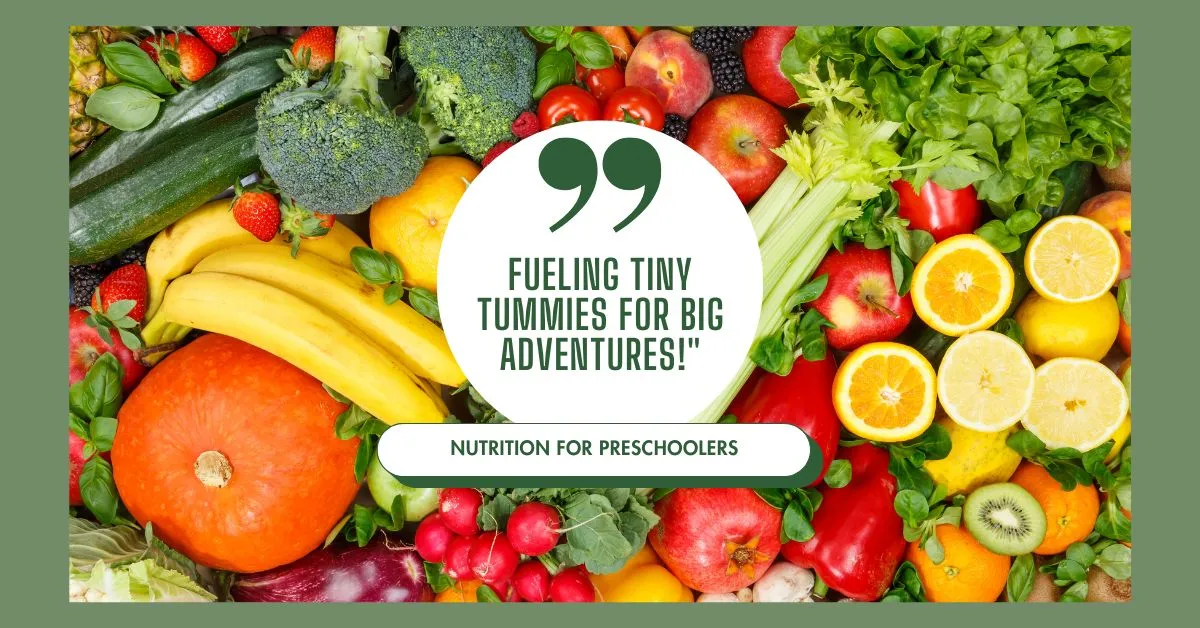Why is Nutrition Important for Preschoolers?
Proper nutrition plays a vital role for children between the ages of 2-5. It impacts their physical and mental development, leading to increased ability to think and understand.
Here’s a breakdown of the key reasons why nutrition is crucial during this age:
- Brain Development: Studies show that a diet rich in omega-3 fatty acids, iron, and choline is crucial for optimal brain development during this critical stage.
- Immune Function: A balanced diet rich in fruits, vegetables, and whole grains provides essential vitamins and minerals that support a healthy immune system, helping preschoolers fight off infections.
- Growth and Development: Nutrients like calcium, vitamin D, and protein are essential for building strong bones and muscles, supporting healthy growth patterns in preschoolers.
Healthy Foods for Preschoolers
Building a balanced diet for your preschooler is key to providing the nutrients they need to thrive. Here’s a breakdown of the essential food groups and tips for incorporating them into your child’s meals and snacks:
- Fruits: Aim for 2-3 servings daily. Choose a variety of colourful fruits for a range of vitamins and antioxidants.
- Vegetables: Aim for 3-4 servings daily. Include a mix of dark leafy greens, orange and red vegetables, and starchy vegetables.
- Grains: Choose whole grains over refined grains whenever possible. Aim for 3-5 servings daily.
- Protein: Include lean protein sources like fish, chicken, beans, and lentils in 2-3 servings daily.
- Dairy: Milk and dairy products provide essential calcium for strong bones. Offer 2-3 servings daily, choosing low-fat or fat-free options.

Diet plan Packages for preschoolers
3 Months Plan
7999₹
- Basic diet chart with options for each meal
- BMI calculator
- BMR calculator
- WhatsApp Support
- Prakriti Analysis
- Follow up
6 Months Plan
13999₹
- Customised daily plan given on weekly basis
- Customised Meal Plan For Weight Loss
- BMI calculator
- BMR calculator
- WhatsApp Support
- Prakriti Analysis
- Follow up
- Weight Maintenace
1 year plan
21999₹
- Customised daily plan given on weekly basis
- BMI calculator
- BMR calculator
- WhatsApp Support
- Prakriti Analysis
- Follow up
- Weight Maintenace
Diet plan Packages for preschoolers
Fitness package
Price
- Customised Meal Plan For Weight Loss
- BMI calculator
- BMR calculator
- WhatsApp Support
- Prakriti Analysis
- Follow up
- Weight Maintenace
3 Months Plan
7999₹
- Basic diet chart with options for each meal
6 Months Plan
13999₹
- Customised daily plan given on weekly basis
1 year plan
21999₹
- Customised daily plan given on weekly basis
Tips for Encouraging Healthy Eating Habits
Preschoolers can be notoriously picky eaters. Here are some tips to encourage healthy eating habits:
- Involve Your Child: Let your child participate in meal planning and preparation. This can make them more invested in trying new foods.
- Offer Variety: Expose your child to a variety of healthy foods from all food groups.
- Make it Fun: Use cookie cutters to create fun shapes with fruits and vegetables.
- Be a Role Model: Children learn by example. Set a good example by eating healthy foods yourself.
- Limit Processed Foods: Processed foods are often high in sugar, sodium, and unhealthy fats. Limit these in your child’s diet.
- Focus on Positive Reinforcement: Praise your child for trying new foods, even if they don’t like them at first. Avoid pressuring them to finish everything on their plate.
FAQ




